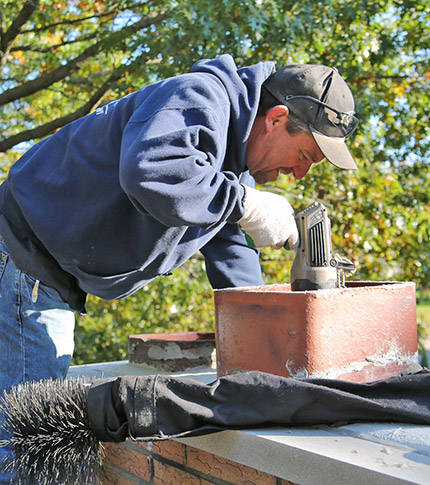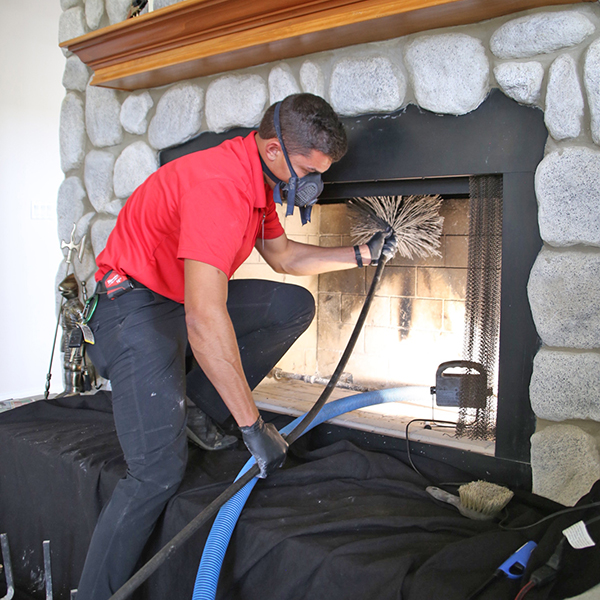Chimney Clean San Jose Brilliance: Where Quality Satisfies Security Requirements
Chimney Clean San Jose Brilliance: Where Quality Satisfies Security Requirements
Blog Article
Smokeshaft Cleaning: A Step-by-Step Overview to Keeping a Healthy And Balanced Fire Place
Keeping a healthy and balanced fireplace is important for the security and performance of your home. Regular chimney cleansing is a crucial part of this upkeep regimen. In this step-by-step overview, we will certainly supply you with in-depth directions on how to effectively cleanse your smokeshaft, making sure that it works optimally and lowers the danger of fire risks. By following these standards, you will find out exactly how to gather the necessary devices, do a visual examination, clear particles and accumulation, sweep the smokeshaft, and complete the last steps for ongoing upkeep. With a professional approach and interest to information, you can confidently look after your fireplace and appreciate its warmth and comfort for years ahead.
Gathering the Essential Devices
To begin the process of smokeshaft cleaning, the primary step is to collect all the necessary tools. Having the right devices at hand ensures a efficient and safe cleaning process. The crucial tools for smokeshaft cleansing consist of a chimney brush, a ladder, ground cloth or plastic sheets, a flashlight, gloves, and a dust mask.
The chimney brush is the main device used to remove soot and creosote accumulation from the flue. It is necessary to choose a brush that matches the shapes and size of your smokeshaft. In addition, a tough ladder is required to access the smokeshaft securely. Make sure the ladder is steady and placed on a flat surface area.
A flashlight is essential for checking the smokeshaft's interior for any type of signs of damages or blockages. Handwear covers are essential to safeguard your hands from residue and other dangerous materials, while a dust mask helps stop the breathing of debris.
Performing an Aesthetic Examination

Utilizing a flashlight, meticulously take a look at the interior wall surfaces of the chimney for any kind of indicators of damage, such as splits, loose blocks, or mortar deterioration. These issues can endanger the chimney's architectural integrity and posture a significant security hazard. In addition, check for any type of signs of water damages, such as staining or efflorescence, as this can suggest a dripping chimney cap or blinking.
Next, inspect the chimney flue for any kind of obstructions. Search for the presence of nesting products, leaves, or particles that may have collected over time (Chimney Clean San Jose). These obstructions can limit air flow, raise the risk of carbon monoxide buildup, and prevent the chimney's capacity to efficiently air vent smoke
Throughout the aesthetic assessment, pay very close attention to the chimney crown, which is the leading surface area that shields the chimney from dampness. Look for cracks or missing items in the crown, as these can permit water to get in the chimney and cause considerable damages.
Clearing Up Particles and Build-up
After finishing the aesthetic inspection, the next step in smokeshaft cleansing includes cleaning particles and accumulation to guarantee the proper performance of the fire place. With time, particles such as fallen leaves, twigs, and animal nests can collect in the smokeshaft, blocking the flow of air and triggering prospective fire hazards. Additionally, the buildup of Your Domain Name creosote, a tar-like substance, is an usual trouble in smokeshafts. Creosote is formed when wood or nonrenewable fuel sources are burned, and if not gotten rid of on a regular basis, it can lead to smokeshaft fires.
To get rid of particles and build-up, it is essential to make use of the right tools and techniques. A smokeshaft brush, particularly developed for this function, is utilized to get rid of loose debris and creosote from the smokeshaft walls. It is important to select a brush that matches the size of your smokeshaft to guarantee reliable cleaning. Before starting the cleansing process, make certain to cover the fireplace opening up to prevent particles from coming under the area.
To start, insert the brush into the chimney and relocate it up and down, rubbing the walls to remove any debris or creosote. Once the cleaning is total, make use of a vacuum cleanser or a smokeshaft brush expansion to get rid of the dislodged particles from the fire place.

Brushing Up the Smokeshaft
The sweeping of the chimney is a critical action in preserving a healthy fireplace. Gradually, soot, creosote, and other debris can build up in the chimney, blocking the circulation of air and possibly causing a hazardous accumulation of flammable products. Normal smokeshaft brushing up not only ensures correct ventilation but also avoids the threat of chimney fires.
When it involves smokeshaft sweeping, it is extremely recommended to hire a specialist smokeshaft move. These specialists have the knowledge and devices necessary to securely and effectively eliminate the collected particles from your smokeshaft. They will typically start by covering the fireplace to avoid any type of residue or particles from entering your home. Using specific brushes and vacuum cleaner tools, they will certainly then cleanse the chimney from top to base, making certain that all the accumulation is extensively eliminated.
It is necessary to note that More about the author the frequency of smokeshaft sweeping depends upon numerous aspects, such as the kind of fuel used, the quantity of usage, and the sort of chimney. As a basic guideline of thumb, it is suggested to have your smokeshaft checked and brushed up official source at the very least annually.
Final Actions and Upkeep
After finishing the smokeshaft sweeping procedure, the first step in the final upkeep is to inspect the smokeshaft cap and spark arrestor. These components avoid debris, animals, and rainwater from going into the chimney.

Inspect the inside of the fireplace for any type of indicators of degeneration, such as splits, loosened blocks, or harmed mortar. These concerns can influence the structural stability and security of the fire place. Seek advice from a professional smokeshaft move or mason to address them immediately. if any kind of troubles are identified.
Ultimately, consider installing carbon monoxide detectors near the fireplace and throughout your home. These tools can detect the presence of this dangerous gas, giving an early warning system in case of a smokeshaft breakdown. Regularly examine and change the batteries in these detectors to guarantee their performance.
Conclusion
In final thought, following a step-by-step overview for chimney cleaning is important in maintaining a healthy and balanced fireplace. By gathering the required tools, performing an aesthetic assessment, removing debris and accumulation, and sweeping the smokeshaft, house owners can guarantee the safety and performance of their fire place.
The important devices for chimney cleansing include a smokeshaft brush, a ladder, decrease fabrics or plastic sheets, a flashlight, gloves, and a dirt mask.
A smokeshaft brush, particularly designed for this objective, is used to get rid of loose particles and creosote from the chimney wall surfaces. Regular smokeshaft sweeping not just ensures correct ventilation yet also protects against the risk of smokeshaft fires.
When it comes to chimney sweeping, it is extremely suggested to hire a professional chimney sweep. After finishing the chimney sweeping procedure, the very first action in the last upkeep is to examine the smokeshaft cap and spark arrestor.
Report this page